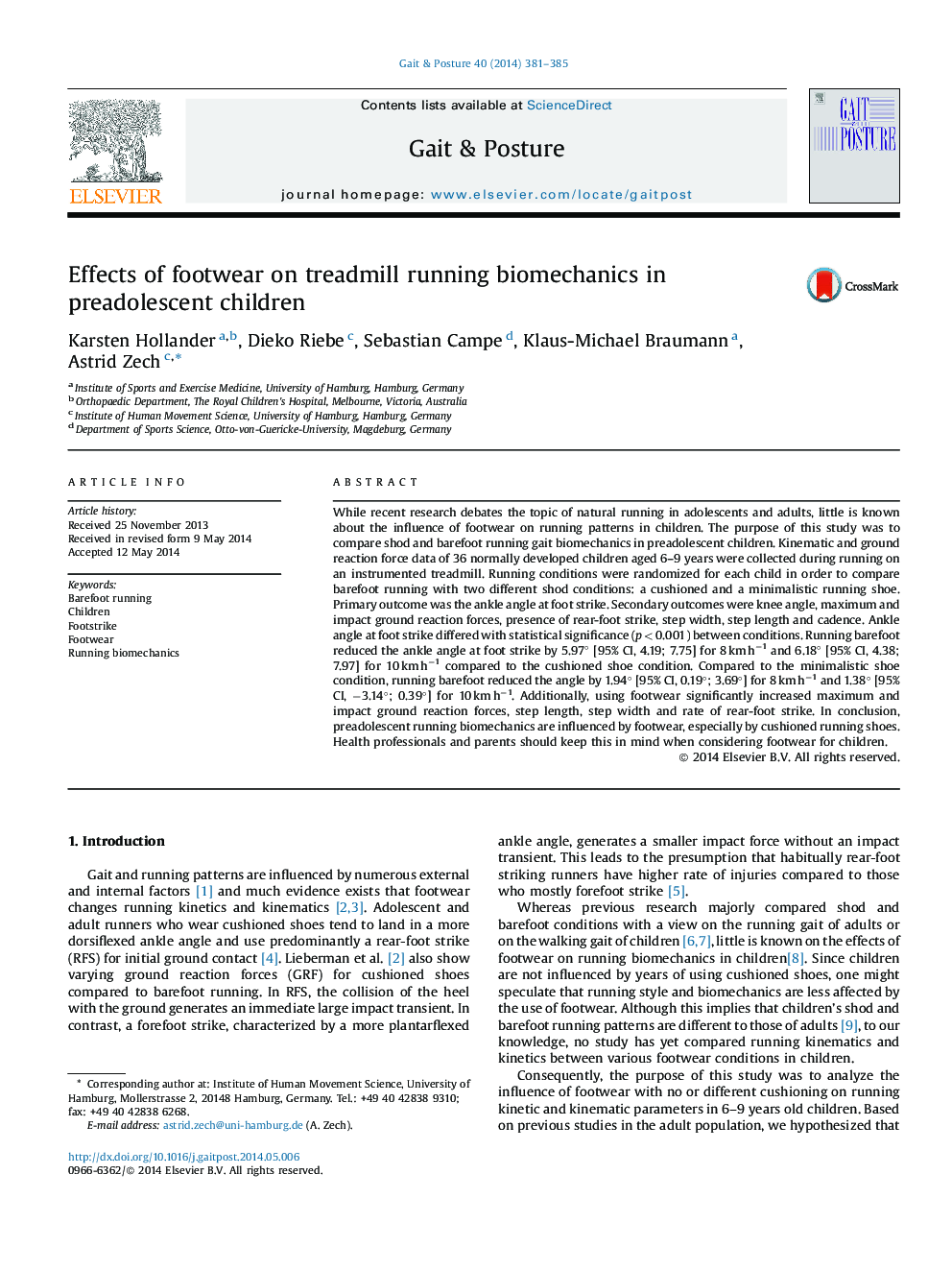| کد مقاله | کد نشریه | سال انتشار | مقاله انگلیسی | نسخه تمام متن |
|---|---|---|---|---|
| 4056197 | 1265644 | 2014 | 5 صفحه PDF | دانلود رایگان |
• This study shows the effects of footwear on running biomechanics in children.
• Preadolescent running gait is influenced by the use of footwear.
• Cushioned running shoes have the biggest impact on running biomechanics.
• Early consideration of footwear might be important for beneficial running patterns.
While recent research debates the topic of natural running in adolescents and adults, little is known about the influence of footwear on running patterns in children. The purpose of this study was to compare shod and barefoot running gait biomechanics in preadolescent children. Kinematic and ground reaction force data of 36 normally developed children aged 6–9 years were collected during running on an instrumented treadmill. Running conditions were randomized for each child in order to compare barefoot running with two different shod conditions: a cushioned and a minimalistic running shoe. Primary outcome was the ankle angle at foot strike. Secondary outcomes were knee angle, maximum and impact ground reaction forces, presence of rear-foot strike, step width, step length and cadence. Ankle angle at foot strike differed with statistical significance (p < 0.001) between conditions. Running barefoot reduced the ankle angle at foot strike by 5.97° [95% CI, 4.19; 7.75] for 8 km h−1 and 6.18° [95% CI, 4.38; 7.97] for 10 km h−1 compared to the cushioned shoe condition. Compared to the minimalistic shoe condition, running barefoot reduced the angle by 1.94° [95% CI, 0.19°; 3.69°] for 8 km h−1 and 1.38° [95% CI, −3.14°; 0.39°] for 10 km h−1. Additionally, using footwear significantly increased maximum and impact ground reaction forces, step length, step width and rate of rear-foot strike. In conclusion, preadolescent running biomechanics are influenced by footwear, especially by cushioned running shoes. Health professionals and parents should keep this in mind when considering footwear for children.
Journal: Gait & Posture - Volume 40, Issue 3, July 2014, Pages 381–385
